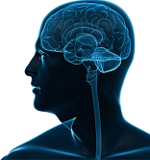Potential paradigm shift in the treatment of mild traumatic brain injury (concussion)-use of vision therapy to improve high level cognitive functions
In prior posts I have discussed the growing understanding in the scientific community that vision is often disrupted in subtle ways following a concussion (both the ability of the eyes to track and higher level visual processing). I noted that the introduction to a recent issue of the respected journal NeuroRehabilitation was devoted entirely to vision disturbance following TBI.
A new study just published in the journal Restorative Neurology and Neuroscience has produced evidence that a particular vision training exercise – movement figure-ground discrimination – may be very effective in improving high-level cognitive functions such as focusing and switching attention, working memory, processing speed and reading. “Dynamic cognitive remediation for Traumatic Brain Injury (TBI) significantly improves attention, working memory, processing speed, and reading speed.”
The sample size of the study was small, so the results could be anomalous, but the potential benefits of this approach are very exciting.
The exercise used in the study involved discriminating the direction a test pattern moves relative to a stationary background. The researchers administered standardized tests for reading, attention, and working memory at the beginning and end of 8-16 weeks of training using the vision exercise. They also did MEG (Magnetoencephalography) brain imaging before and after the training, which confirmed improvements in brain networks associated with attention.
The working hypothesis was that a TBI causes visual timing deficits that in turn disrupt processing at higher levels, causing deficits in attention and executive control. The results supported that hypothesis.
The same researchers have found similar improvements using these exercises in children and adults with dyslexia.
Information about the vision training program, called “PATH (Perceptual Attention Therapy) to Insight” can be found at the PATH to Reading website.
These results must be considered with caution because of the small sample size and potential conflicts of interest by the researchers. They are, however, sufficiently noteworthy that a larger clinical trial has been scheduled at UC San Diego to further test this approach.

